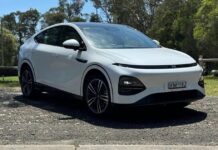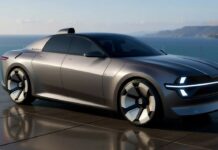BMW is preparing a major overhaul of its 3-Series lineup, splitting development into two distinct paths: the traditional gasoline-powered model and the all-electric i3. Recent spy shots reveal a striking divergence in design, suggesting minimal shared exterior components despite both cars adopting BMW’s upcoming “Neue Klasse” front end. This move signals BMW’s commitment to a clear separation between its combustion and electric vehicles, even if it adds complexity to production.
Distinct Exterior Design
The most visible difference lies in the lower front bumpers. The gas-powered 3-Series features a prominent air intake with active grille shutters, while the i3 uses a camouflaged mesh panel. Further apart, the i3 boasts a flatter roofline compared to the 3-Series’ subtle slope. Rear door designs also vary – the gasoline model has a near-vertical partition, and the EV has a more angled triangular base, with unique rear quarter glass shapes. Even the placement of the fuel/charging door differs, highlighting the lack of common design elements.
Interior Upgrades
Inside, both models will feature a freestanding display and a new steering wheel. Spy shots confirm a pillar-to-pillar Panoramic iDrive display, a significant upgrade over current BMW interiors. While most of the cabin remains hidden under cloth covers, the focus on screen tech is evident.
i3 Electric Performance
The i3 is expected to follow the iX3’s lead in powertrain tech. The current iX3 xDrive50 variant delivers 463 horsepower and 476 lb-ft of torque, accelerating from 0-62 mph in 4.9 seconds. The i3 will likely inherit this dual-motor all-wheel-drive system, powered by a 108.7 kWh battery offering up to 500 miles of WLTP range. With 400 kW DC fast charging, an 80% charge is achievable in around 21 minutes. BMW plans to offer more affordable rear-wheel-drive i3 options in the future.
3-Series Evolution
The gasoline 3-Series will ride on an updated CLAR platform, with an evolutionary design approach. Expect an updated engine lineup, including a new M350 variant exceeding 400 horsepower. BMW’s decision to prioritize design differences between the two models underscores its dual-track strategy for the future of its core sedan lineup.
The divergence in design suggests BMW is intentionally creating clear distinctions between its electric and gasoline vehicles, even if it means increased manufacturing complexity. This reinforces the company’s commitment to both technologies while signaling a shift toward more specialized models.


























